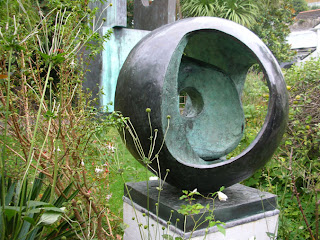
It began as a year of great promise for poutine.
Early in 2006, it seemed as if nothing—not even the North American Free Trade Agreement—would stand in the way of one man’s solitary battle to introduce Canadian poutine to the United States.

But as time passed, the dream of a licensed Birds 'n' Curds chain was shattered as riots erupted in protest against the restaurant in the upscale neighbourhood of Georgetown in Washington, D.C.
In September, my entrepreneurial friend confessed he was running into problems.
"There is a strong anti-Canadian undercurrent in leafy Georgetown," he said.
"They won't let me bring in Canadian chefs, who are the only ones who can do poutine the right way, and anti-Canadian groups are threatening to burn the place down if I go ahead with the opening. Frankly, I never realized how deeply unpopular Canadians were here."
The first Birds 'n' Curds restaurant was to open in the former Riggs Bank at the intersection of Wisconsin and M Streets in the heart of the Georgetown shopping area.
ORIGINS OF POUTINE
Poutine is a popular French-Canadian dish made of French fries, cheese curds and gravy.
The creator of the dish, which is sold in pubs and restaurants in eastern parts of Canada, Fernand Lachance (pictured below), died in 2004 at the age of 86 in Warwick, Quebec, a small town 138 kilometres (86 miles) northeast of Montreal.

Legend has it that Lachance first made poutine after a trucker came into his restaurant in September 1957 asking for a mixture of cheese curds, fries and gravy.
Poutine is also said to have evolved from pudding recipes of the French-speaking Acadians of Atlantic Canada.

Cheese curds are small, rubbery pieces of fresh cheddar that have not yet been pressed or aged. Poutine is French-Canadian slang for the word “mess.”
EARLY DAYS
The summer began on a high note for the Birds 'n' Curds project, with an elite crew of Georgetown residents gathering at the restaurant while it was still under construction to sip on poutinis—vodka and potato schnapps cocktails with cheese curds floating in them.

"Man, I got so hammered on poutinis last night . . . I hope I NEVER see any more beef vodka!" one resident proclaimed.
"Of course, I must say, poutinis rarely make people sick -- that's because the grease content of the gravy schnapps is so high that it coats your stomach, limiting the damage the alcohol can do."
GEORGETOWN RIOTS
Insurance companies have since frozen out the Birds 'n' Curds project. My friend speculates that they are afraid of taking a loss after the Georgetown riots revealed a strong anti-Canadian sentiment in Washington.
"The [renovation] work really slowed down when the anti-Canadian riots started," my friend said. “It's getting really ugly. Two nights ago, a big [red] maple leaf was painted on the door of my Georgetown home."

"It's kind of a stalemate," he said. "I remain stunned at the depth of feeling against that kind of food. On the positive side, I'm pleased with the interest and creativity sparked by the poutini recipes. I think that may be the best thing to come out of this."
He said he's not sure if he will produce Wisconsin-style cheese curd dishes instead.

"It's a question of whether I want to sell out a whole culture for a few dollars," he explained.
"I'm the one who wants to open a Canadian restaurant, and I've said openly that I thought Canadians aren't as bad as everybody thinks. That's just the kind of open-minded guy I am."
He says he hopes his work leads to a Nobel Peace Prize ~

























